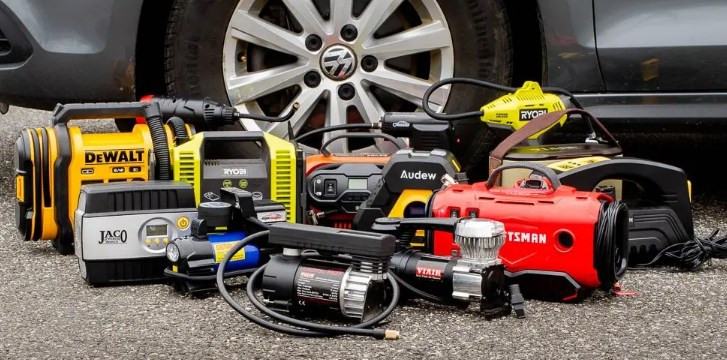Maintaining the right tire pressure is crucial for the safety and performance of your vehicle. Properly inflated tires not only ensure a smoother ride but also contribute to better fuel efficiency and extended tire life. In case you have low tire pressure, how to put air in tires? Luckily! This post is for you. In this post, CouponUpto shares a comprehensive step-by-step process on how to put air in tires correctly.
Step 1: Gather the Necessary Tools and Information

Before you begin to learn how to put air in tires, ensure you have everything you need for the task:
Tools:
Tire pressure gauge (digital or analog)
Air compressor or access to a gas station with an air pump
Valve caps (for reinstallation)
Information:
Recommended tire pressure (found in the vehicle's owner's manual or tire placard)
Step 2: Prepare to Put Air in Tires

Next, choose a suitable location to carry out the task. Follow these steps:
Park on a Level Surface:
Find a flat and level surface to park your vehicle. This ensures accurate pressure readings and safe working conditions.
Engage the Parking Brake:
Prevent your vehicle from rolling by engaging the parking brake.
Allow Tires to Cool:
Tire pressure can increase as the tires heat up during driving. To get accurate readings, ensure the tires are cool before checking and adjusting the pressure.
Step 3: Check the Current Tire Pressure

Accurate pressure readings are essential. To check the pressure in each tire, here are things to do:
Remove Valve Cap:
Unscrew the valve cap from the valve stem of the first tire.
Attach the Tire Pressure Gauge:
Press the tire pressure gauge firmly onto the valve stem. You might hear a slight hiss of air escaping, which is normal.
Read the Pressure:
The gauge will display the current pressure of the tire. Take note of this reading.
Repeat for All Tires:
Repeat the process for all four tires, recording the pressure of each.
Step 4: Calculate Required Inflation

Determine how much air each tire needs. Here's how:
Refer to Recommended Pressure:
Check the recommended tire pressure for your vehicle. It's usually listed in the owner's manual or on a tire placard.
Calculate the Difference:
Subtract the current pressure (noted in step 3) from the recommended pressure. This gives you the amount of additional air needed.
Step 5: Inflate the Tires

Add air to the tires while ensuring accuracy and safety. Follow the following steps on how to put air in tires:
Attach the Air Compressor Nozzle:
If using an air compressor, attach the nozzle to the valve stem of the first tire. Make sure it's securely attached.
Inflate in Short Bursts:
Add air in short bursts, usually 3-5 seconds each time. This prevents overinflation and allows you to monitor the pressure closely.
Check Pressure:
After each burst of air, check the tire pressure with the gauge. Continue adding air and checking until you reach the desired pressure.
Avoid Overinflation:
Be cautious not to overinflate the tire. If you accidentally overinflate, press the center pin in the valve stem briefly to release some air.
Repeat for All Tires:
Repeat the inflation process for each tire, adding the calculated amount of air.
Step 6: Double-Check and Equalize

Ensure all tires are evenly inflated. Follow these steps:
Double-Check Pressure:
After inflating all tires, recheck their pressure using the gauge to make sure they meet the recommended levels.
Equalize Pressure:
Make minor adjustments if necessary to ensure all four tires have uniform pressure.
Step 7: Reinstall Valve Caps and Final Inspection

Complete the process of putting air in tires and perform a final inspection. Here's how:
Reinstall Valve Caps:
Screw the valve caps back onto the valve stems to protect them from dust and debris.
Visual Inspection:
Carefully inspect each tire for any signs of damage, such as cuts, bulges, or punctures.
How to Put Air in Tires - FAQs
Why is it important to maintain proper tire pressure?
Proper tire pressure ensures optimal vehicle performance, fuel efficiency, and tire longevity. It also enhances safety by providing better traction and stability.
How often should I check my tire pressure?
It's recommended to check your tire pressure at least once a month and before long trips. Temperature changes can affect tire pressure, so monitoring during extreme weather shifts is advisable.
How to know when to stop putting air in tire?
Use a tire pressure gauge to compare the current pressure to the recommended pressure. Stop adding air once the readings match. In some cases, modern air pumps with digital displays can be set to stop at a desired pressure.
How to put air in tires at gas station?
Most gas stations have air pumps available for public use. Make sure to have the necessary tools, such as a tire pressure gauge, and be prepared to pay a small fee at some stations.
What if I accidentally overinflate a tire?
If you overinflate a tire, you can release some air by briefly pressing the center pin in the valve stem. Recheck the pressure using a gauge to ensure it's at the correct level.
Can I inflate my tires when they're hot from driving?
It's best to check and adjust tire pressure when the tires are cold, as driving heats up the tires and can lead to inaccurate pressure readings.
Can I use an electric pump at home to inflate my tires?
Yes, you can use an electric pump at home as long as it has the necessary pressure range and attachments for your tires. It's a convenient way to maintain proper tire pressure.
Do I have to turn your car off to put air in tires?
You do not necessarily have to turn your car off to put air in the tires, but it is generally recommended to turn off your engine for safety reasons. If you choose to leave your car on while adding air, make sure to exercise caution and remain aware of your surroundings.
Maintenance Tips for Optimal Tire Health
Ensure the longevity of your tires with regular maintenance:
Check and Adjust Regularly:
Schedule monthly checks of your tire pressure and adjust as needed.
Monitor Temperature Changes:
Keep in mind that temperature fluctuations can affect tire pressure, so monitor it during extreme weather changes.
Spare Tire Maintenance:
Don't forget to check and maintain proper pressure in your vehicle's spare tire.
Conclusion
Maintaining the correct tire pressure is an essential aspect of vehicle safety and performance. By following this comprehensive step-by-step guide, you now know how to put air in tires and have the useful knowledge and skills needed to ensure your tires are properly inflated. Regular tire maintenance not only enhances your driving experience but also contributes to fuel efficiency and extends the life of your tires. Remember, a few minutes of preventive maintenance can go a long way in keeping you safe on the road.
Read more: Guide on How To Turn On Heater In Car



:max_bytes(150000):strip_icc()/citrus-and-fennel-chicken-with-olives-and-calabrian-chiles-FT-RECIPE0222-c1ef1d87fa514fa08e1616617cdab618.jpg)


